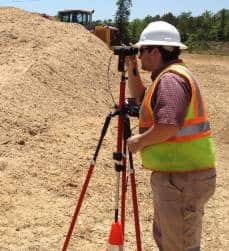


Black defendants were still 77 percent more likely to be pegged as at higher risk of committing a future violent crime and 45 percent more likely to be predicted to commit a future crime of any kind.

We ran a statistical test that isolated the effect of race from criminal history and recidivism, as well as from defendants’ age and gender.
Landmark compass software free download full#
When a full range of crimes were taken into account - including misdemeanors such as driving with an expired license - the algorithm was somewhat more accurate than a coin flip. The score proved remarkably unreliable in forecasting violent crime: Only 20 percent of the people predicted to commit violent crimes actually went on to do so. We obtained the risk scores assigned to more than 7,000 people arrested in Broward County, Florida, in 20 and checked to see how many were charged with new crimes over the next two years, the same benchmark used by the creators of the algorithm. So ProPublica did, as part of a larger examination of the powerful, largely hidden effect of algorithms in American life. The sentencing commission did not, however, launch a study of risk scores. “Although these measures were crafted with the best of intentions, I am concerned that they inadvertently undermine our efforts to ensure individualized and equal justice,” he said, adding, “they may exacerbate unwarranted and unjust disparities that are already far too common in our criminal justice system and in our society.” Sentencing Commission to study their use. Attorney General Eric Holder warned that the risk scores might be injecting bias into the courts. Two Petty Theft Arrestsīorden was rated high risk for future crime after she and a friend took a kid’s bike and scooter that were sitting outside. And a landmark sentencing reform bill currently pending in Congress would mandate the use of such assessments in federal prisons. The Justice Department’s National Institute of Corrections now encourages the use of such combined assessments at every stage of the criminal justice process. Rating a defendant’s risk of future crime is often done in conjunction with an evaluation of a defendant’s rehabilitation needs. In Arizona, Colorado, Delaware, Kentucky, Louisiana, Oklahoma, Virginia, Washington and Wisconsin, the results of such assessments are given to judges during criminal sentencing. They are used to inform decisions about who can be set free at every stage of the criminal justice system, from assigning bond amounts - as is the case in Fort Lauderdale - to even more fundamental decisions about defendants’ freedom. Scores like this - known as risk assessments - are increasingly common in courtrooms across the nation. Prater is serving an eight-year prison term for subsequently breaking into a warehouse and stealing thousands of dollars’ worth of electronics. Borden has not been charged with any new crimes. Two years later, we know the computer algorithm got it exactly backward. Prater - who is white - was rated a low risk. Borden - who is black - was rated a high risk. Yet something odd happened when Borden and Prater were booked into jail: A computer program spat out a score predicting the likelihood of each committing a future crime. Borden had a record, too, but it was for misdemeanors committed when she was a juvenile. He had already been convicted of armed robbery and attempted armed robbery, for which he served five years in prison, in addition to another armed robbery charge. Read about how we analyzed the risk assessments algorithmĭownload the full data used in our analysisĬompare their crime with a similar one: The previous summer, 41-year-old Vernon Prater was picked up for shoplifting $86.35 worth of tools from a nearby Home Depot store.


 0 kommentar(er)
0 kommentar(er)
